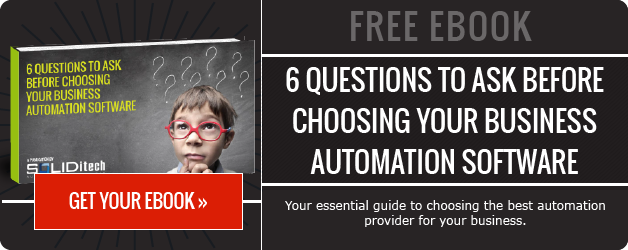Every business is in the software business. I’m not wrong. From your local bakery sending orders through Uber Eats to your gym with a membership management system. Every single business needs software to operate and/or promote their products and services. Obviously the need for custom software is a sliding scale - but I feel confident in assuming you, dear reader, are closer to the ‘custom software is already happening or is on my radar’ side of the scale.
If you’ve been involved in a software project before then you’ll already know that they are often layered and complex. They are investments that involve multiple stakeholders throughout your business, lots of technical details and evolving requirements. Like a custom home renovation project, having a solid working relationship with your main contractor makes the difference between a successful project, or, um, yeah, something else.
As a software development company, I can assure you that we want to maximise the success of the partnership we have with you, just as much as you do. We’ve also worked on a fair few projects and feel like we’ve got some wisdom to impart. We also strongly believe that everyone should understand software and its capabilities.
A strong partnership = successful partnership.
Strong software project management, effective communication, good feedback loops, technical understanding and customer involvement are all cornerstones to this strong partnership. Let me talk you through each of these for this ‘ultimate guide’.
| Included in this post: |
The Importance of Communication

Good quality and regular communication ensures a few things:
- Expectations are clear and well managed
- Collaboration happens in a meaningful way
- Feedback is continuous and constructive (we call this a Feedback Loop)
- Scope and its inevitable creep are kept in check
Everyone needs to be ‘speaking the same code’ for trust and transparency to be present and for you to get a software solution that meets or exceeds your expectations.
Some great tips that we’ve highlighted before, include:
- Establish Open Lines: Create clear communication channels
- Document Decisions: It’s easier to stick to clear goals this way
- Speak Plainly: no jargon. Be clear, be concise.
- Visualise Ideas: Diagrams, graphs and other tools are very useful in clarifying and conveying ideas
- Leverage collaborative tools: This will help immensely in keeping your project(s) on track
Customer Involvement
Great solutions end up being so much better when you, the customer, is actively involved in the software development process. Why? There’s greater clarity on objectives and priorities - and when those things happen, there’s less time and resource wastage. Regular demos result in more specific refinement and any potential errors are spotted earlier.
Top Tip: Always have a nominated project owner. This person holds the practical, day-to-day relationship with the development team. They are also responsible for communicating the defined needs of your business in a way that the development team can translate into functional software. Thinking it’s ok not to appoint someone to this role is a myth that’s best avoided.
Understanding the Process
I get that you’re hiring professionals because you want the best outcome. I would still suggest you become familiar with some of the lingo (APIs anyone?), how Agile project management works and what the Software Development Life Cycle actually looks like (and why it works).
This all aids expectation management and further emphasises how to really maximise this investment of yours.
We have cleared up some of the bigger myths of software projects over here - specifically around planning, testing, using professionals and growth over time.

Testing, Testing.
Spending time to ‘understand the process’ as suggested above helps to understand why ‘testing’ gets a special mention. It can be tricky for software developers to explain why testing - both Quality Assurance Testing (QAT) and User Acceptance Testing (UAT) - is included as a fair chunk of both time and budget on their invoices.
Bottom line: It’s not worth building great software and not checking if it doesn't work (QAT), or isn’t working the way you wanted (UAT). Right? We agree.
Doing thorough testing:
- Mitigates risks (of a failure in production)
- Implements Quality Controls (check and double check)
- Reduces costs (fixes are put in place as the project progresses, reducing time spent reworking larger sections later down the line)
- Improves staff satisfaction (they get to work on good quality, correctly built software)
- Saves time (time is not wasted)
Checklist of 5 Top Tips:
It’s super cheesy to say that ‘growth’ is in the journey and not only the destination. But it’s just plain true. Obviously in this case the destination (functional software that solves a real problem for you) is very exciting, but it’s so important to remember that the journey is all about how you get there.
A well-executed software development project (aka ‘journey’) is directly proportional to the success of the result. Maximising the quality of the relationship between yourself and your chosen software development company is the only way to get there.
Here is a checklist of our top 5 tips:
- Communicate Clearly and Regularly
- Define Goals and Expectations Together
- Engage in Planning and Decision-Making
- Embrace Iterative Development and Continuous Feedback
- Build a Relationship Based on Trust and Respect
I would also like to add that it is important to find a development team that you are compatible with. This means finding a team that has the skills and experience that you need, and that you feel comfortable working with.
I hope this guide has been helpful. If you have any questions, please feel free to leave a comment below.








Comment